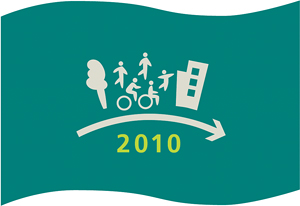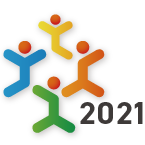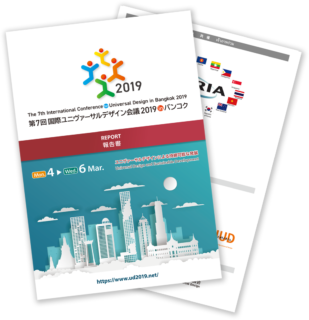2025.05.29
towards2010: Mainstreaming Design for All
2010.07.11 Updated
Francesc Aragall
President, Design for All Foundation, Spain

Design for All / Universal Design is a concept that has more and more support around the world. However, there are still habits, ignorance and wrong priorities that need to be overcome. The challenge is clear: we must "mainstream" Design for All.
Public administrations in general do not escape from the problem. They see the needs and establish the legal frameworks that go in the right direction, but these actions do not achieve the extent of the expected results because although the administrations enforce the mechanisms that ensure the fulfilment of the rules the citizens feed-back and the management of the "constant improvement process" is still invisible. The impulse of Design for All on a practical level depends basically on two aspects: on the one hand, the willing personal commitment of the people who decide (politicians and businessmen), usually for ethical reasons; and on the other hand the pressure of the civil society, in particular associations of people with functional limitations and organizations pro human rights.
I do believe, however, that these ways, despite being well-intentioned, are not enough. The challenges we are facing as a society are very important (and in the future they will be even more). This is why we should join our efforts and work together to overcome the difficulties that we encounter when it comes to implementing the principles of the Design for All / Universal Design.
To that effect, there is a base problem: the "well done" Design for All is not perceived by the users, or maybe it is perceived but it is quickly "interiorized" or "normalised", in such a way that it is not appreciated as a benefit, but it is taken for granted. Despite this fact being to a certain extent logical, it entails an obvious problem when it comes to convincing on the goodness of the investment in Design for All: why do we have to invest in something that will not improve our user's satisfaction? (This reasoning is mistaken, as we will see further on).

Examples of this situation can be found in studies carried over of investments done in accessibility in public transport. The results show that they only generate a temporary improvement in the index of user's satisfaction, soon coming back to the previous values. It is also the case of highly consumed products like coffee machines, where usability is a key characteristic but little appreciated by the users (until they have some difficulty using the competitors' ones), or in some supermarkets, where signage and accessibility make it easier for people to move around and find one's way perfectly. In all these cases, and in many others, the users are little or not at all aware of the efforts made to adapt to their needs.
This takes us to another problem, which are the connotations that the "Design for All" or the "Universal Design" have in terms of business marketing, especially in the area of "consumer goods". According to a German study carried out in 2009 by companies of various sectors, the mental link can be established between these two concepts and the ones of "advanced age", "disability" and "rehabilitation" results in these concepts not to be used for public marketing campaigns: everybody, young people, old people and people with disabilities prefer products that are "cool", "trendy" and "young" (even though interviewed businessmen acknowledge that to know and apply the principles of the Design for All is an strategic and positive commitment).

もOne more problem comes from the cultural and economic differences at a respected everywhere in the planet (sometimes they are expelled from social life) and in these places the task is very basic. In other cases, despite sharing the principles of the Design for All, limitations in the resources or the scarcity of effort to be made is global, and who have more resources must contribute to those who have less.
Our view in Design for All Foundation takes a chance on facing these problems via three possible paths:
- On the one hand, spreading the principles of Design for All at a global level, based on a focus of respect of the human rights, the rights that everybody has to actively participate in society on equal opportunities.
-
On the other hand, shaping and boosting projects in which the objectives pursued by Design for All coincide or align themselves with those of the decision makers the different areas, turning Design for All into a tool to achieve their own objectives. The Flag of Towns and Cities for All As examples of projects, we have developed the "Flag for Towns and Cities for All" that promotes the commitment of cities to improve their environment for the quality of life of all citizens and visitors, which has a clear social, political and economical impact. What does the administration obtain? The Flag is useful to make the day to day actions of the administration visible and relevant for the itizens; it participates of a network of knowledge, benefits from the feedback of its citizens and reduces the inherent risks in investments. Another example, on the entrepreneurial field, is the creation of the H.U.M.B.L.E.S. method (© Aragall 2008), an integral methodology that allows companies to incorporate the values of the Design for All in their processes and products, which allows them to improve their social impact and obtain benefits for the clients and users of their products and services. In addition, the company gains in other aspects too: it is a tool that generates new opportunities being also a source for innovation; it helps to increase the company's reputation and to explore new markets, which consequently improves its economic results.
 The Flag of Towns and Cities for All
The Flag of Towns and Cities for All - Last but not least, considering the temptation in a field relatively new to "reinvent the wheel", we are determined to building up a repository of knowledge on Design for All/Universal Design open to all, with the will of providing quality information about the concepts, experiences and projects; organizations, professionals and lines of research, and boosting to the maxim the synergies amongst the different actors of this field, often fragmented. I would like to underscore the fact that it must be "open" and "multidirectional", that is, it needs to be able to get richer with the additions of all the people.
"Mainstreaming" in the Design for All/Universal Design is a common effort that obeys to a social global need. Administrations and civil society have their role, but this role is also in the hands of the rest of the social agents. If we want to reach a world where no one feels marginalised, we must work on all levels towards the same direction and learn from the positive experiences.
The Design for All Foundation is highly committed to the aim and therefore we stress the need for creating strong laces among organizations around the world to achieve this end.








